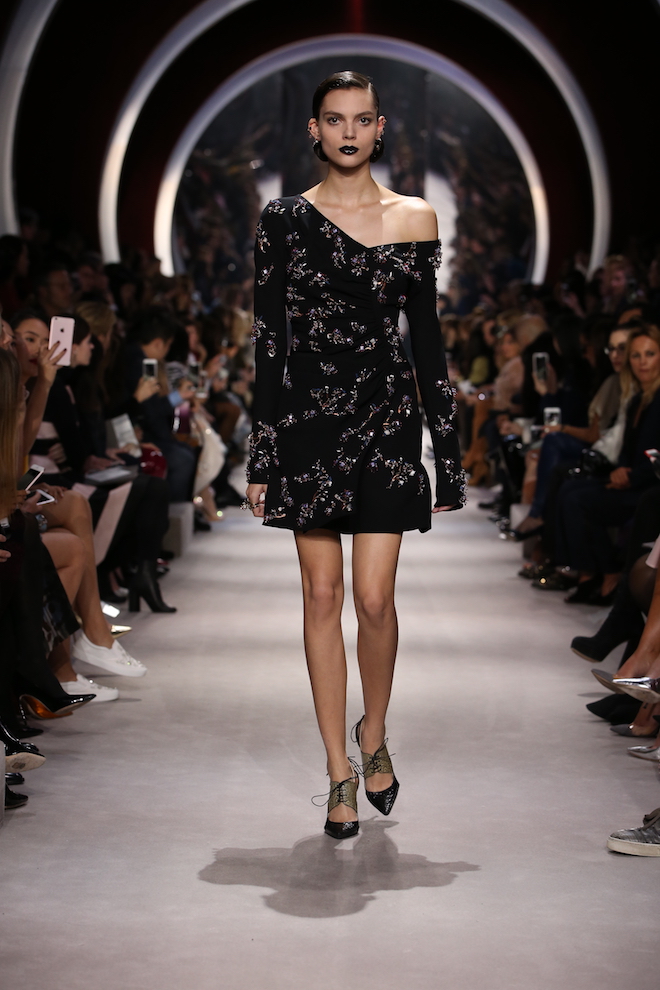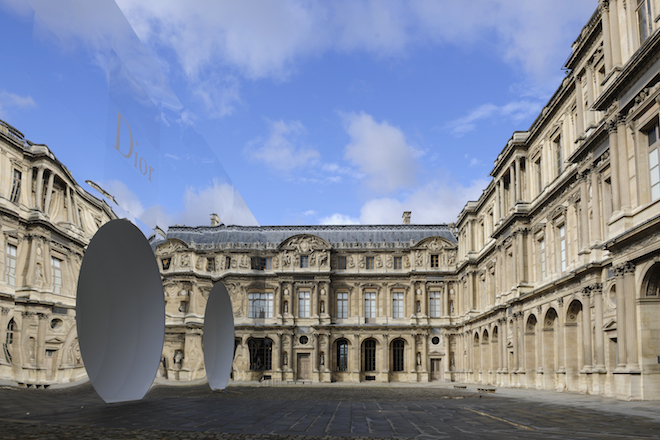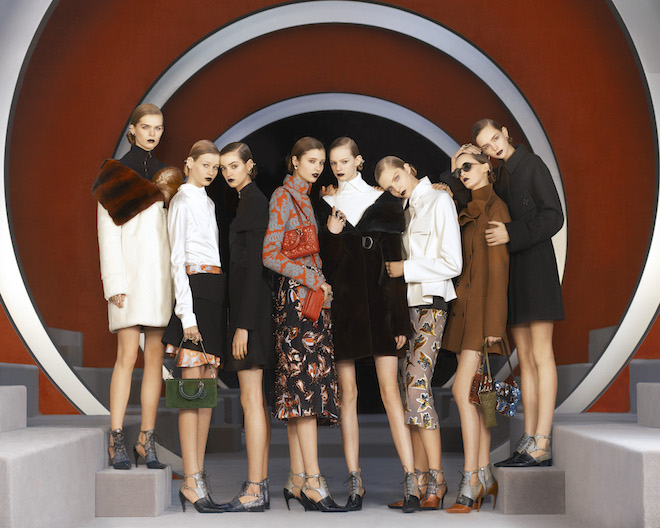Paris Fashion Week is not a low key affair. It always has – and remains to be – where a large handful of historically iconic design houses show their respective wares amidst a flurry of theatrics and architectural grandeur. And one of the most memorable of AW16 was Christian Dior.
The fact that the world still awaits the name of a successor to the now departed Raf Simons was momentarily shelved, as the skill of the exemplary design foundations of the house took centre stage. This is a brand with creative and flair at its core, and although an effective ‘lead singer’ of the big fashion band is still yearned for, Serge Ruffieux and Lucie Meier – who worked in Raf’s former team – have more than proved that it’s not necessary for them to have one in place to be able to produce greatness.

This season followed on from the success of January’s couture collection, and was yet another show with a strong focus on the key ‘looks’ of the late Mr Dior, with “black silhouettes as crisp as the sheets of white paper on which they spring to life: dense, textured, embroidered and quilted.”
It also featured “hand-painted dévoré velvets, re-coloured jacquards inspired by one of Monsieur Dior’s iconic sketches” as well as, “fragments of colour, embroidered motifs atop prints, a touch of leopard.” It was a collection in which “everything lies in the mix and the compilation,” according to Dior themselves.

Image by Adrien Dirand for Dior
And the sets? Magnificent. Once again Bureau Batek made made illusion a reality, and used vast mirrors to disorientate in the entrance to the normally so familiar Musee de Louvre. Once you found your way in, it was a journey through spiraling tunnels clad in dulled metallic finishes and burgundy velvet. It’s was both reminiscent – many said it conjured the historic grandeur of a cathedral – and incredibly modern – we suppose, just like the clothes themselves.



 Twitter
Twitter
 Tumblr
Tumblr
 YouTube
YouTube
 Facebook
Facebook
 Instagram
Instagram
